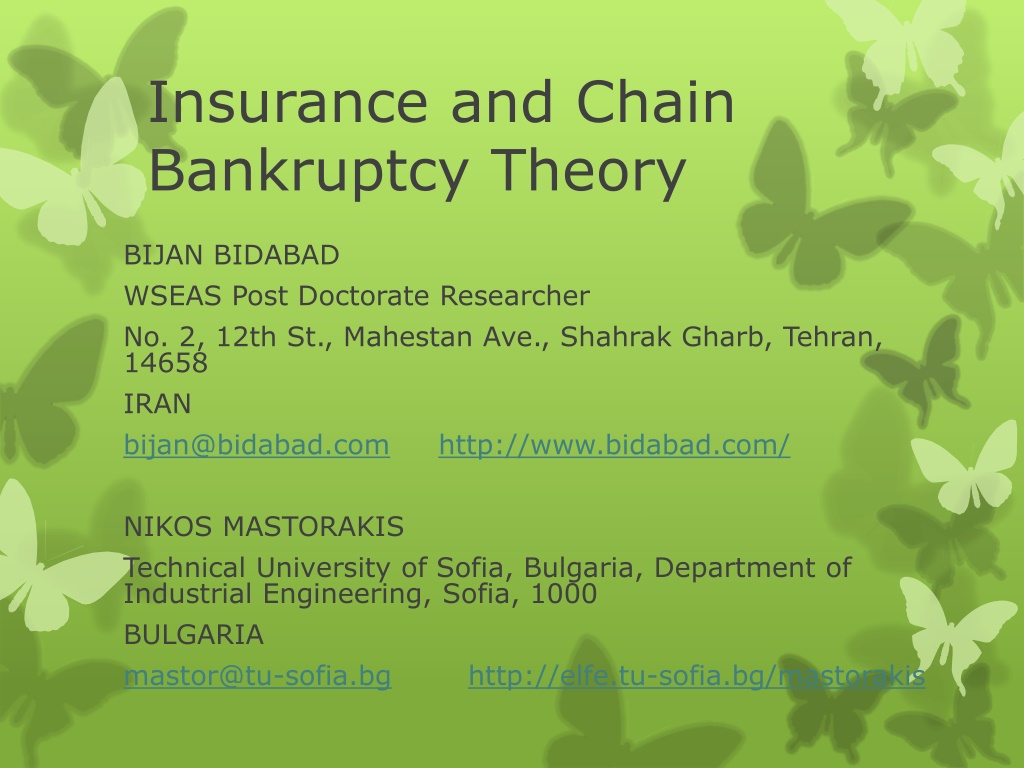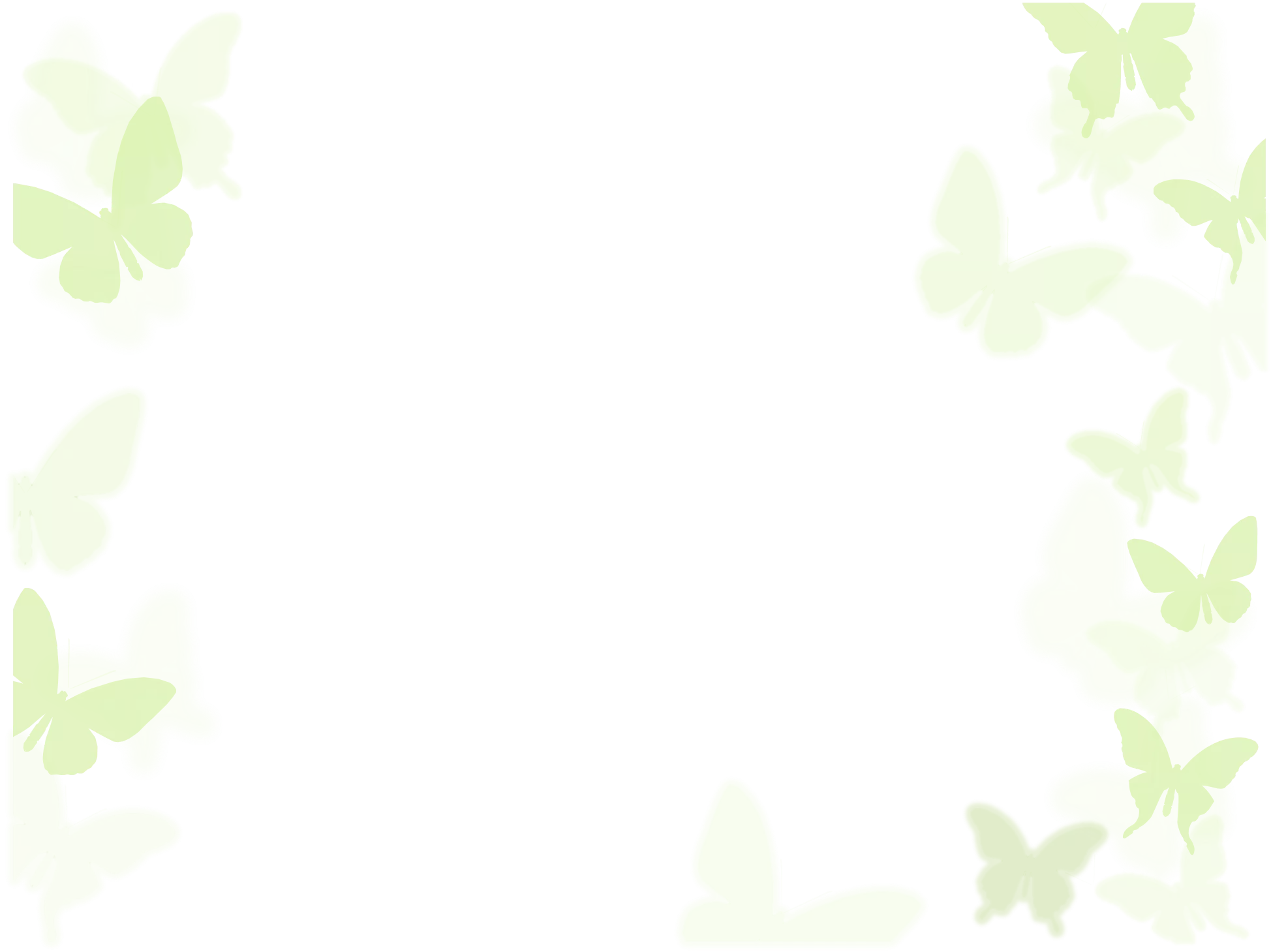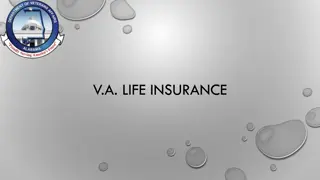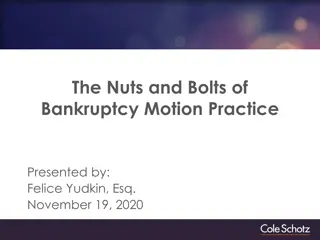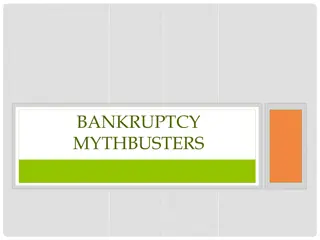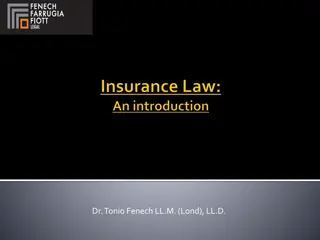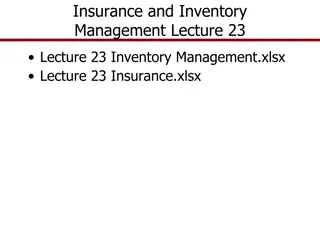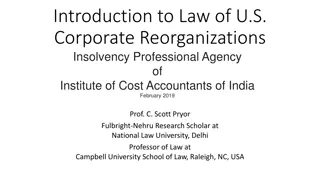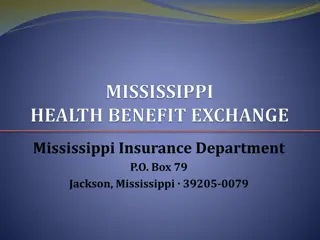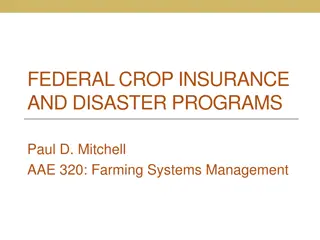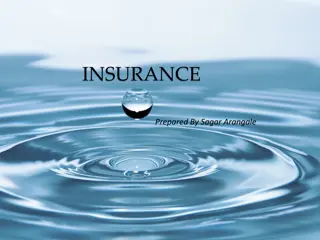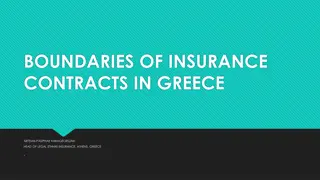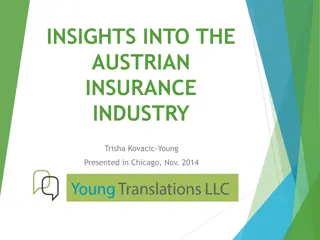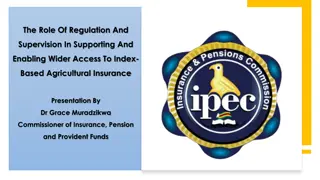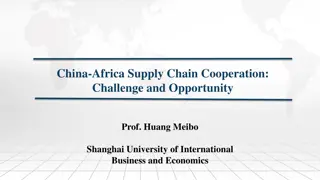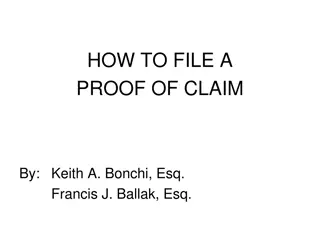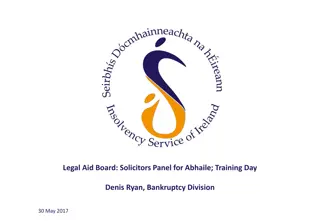Insurance and Chain Bankruptcy Theory
Post-doctorate researcher Bijan Bidabad delves into the intricate relationship between insurance and chain bankruptcy, offering valuable insights and analysis. Explore his comprehensive research and findings on this critical subject, shedding light on potential risks and implications within the financial sector.
Download Presentation

Please find below an Image/Link to download the presentation.
The content on the website is provided AS IS for your information and personal use only. It may not be sold, licensed, or shared on other websites without obtaining consent from the author.If you encounter any issues during the download, it is possible that the publisher has removed the file from their server.
You are allowed to download the files provided on this website for personal or commercial use, subject to the condition that they are used lawfully. All files are the property of their respective owners.
The content on the website is provided AS IS for your information and personal use only. It may not be sold, licensed, or shared on other websites without obtaining consent from the author.
E N D
Presentation Transcript
Insurance and Chain Bankruptcy Theory BIJAN BIDABAD WSEAS Post Doctorate Researcher No. 2, 12th St., Mahestan Ave., Shahrak Gharb, Tehran, 14658 IRAN bijan@bidabad.com http://www.bidabad.com/ NIKOS MASTORAKIS Technical University of Sofia, Bulgaria, Department of Industrial Engineering, Sofia, 1000 BULGARIA mastor@tu-sofia.bg http://elfe.tu-sofia.bg/mastorakis
Abstract By economic analysis of insurance, the chain bankruptcy theory is put forward as a new theory. Through a mathematical-behavioral model we will show how insurance breaks the chain bankruptcy in the economy and make the business cycle oscillation range narrow.
The Analysis Economic insurances which are often called commercial insurance, have a long history, going back to 6500 years ago. According to a found papyrus belonging to 65 centuries ago, in order to help and protect each others against accidents, ancient Egyptian lithographers used to pay a share to a fund. In 2250 B.C., Hammurabi, king of Babel legislated a law according to which transporters were responsible for the cargo they carried until delivery. In 588-640 B.C. in Greece, there were associations which established funds and received monthly fees to help and protect members against injury and damages. A similar organization has also been seen in ancient Rome.
Business Cycle In business cycles, fluctuations caused by seasonal fluctuations and cycles which take 8-11 years to finish, turn the economy from recession to crisis and then to recovery and prosperity and again to recession and a new cycle. Business cycles are a lengthy subject in economics which we don t go into details now. When economy is at prosperity stage, total production is at its maximum level and then tends to decline towards recession until finally reach to crisis. In this process, unemployment of factors of production exacerbates and reaches its maximum in crisis. Firms become bankrupt one after another until inventories empty and prices start to rise and increasing demand increases production and supply and a new recovery and then prosperity starts in the economy within 8-11 years. When the economy is in crisis, by decrease of prices, producers and intermediates start to bankrupt and since they cannot keep their financial obligations, social problems will be the consequences of this compulsory cycle in the economy. When the economy reaches its lowest in crisis stage, prisons will be filled with people who can not afford to pay their debts and obligations. Insurance practically will minimize this cycle and decreases its range. As it is seen in the figure below, the hachured curve has reduced production and income during recovery and prosperity, and instead, has decreased depression and crisis in the next steps. In other words, insurance has reduced the cycle range of short term oscillations and guided the growth trend towards long term economic trend and the economy has been more surrounded.
Business Cycle Production Short run trend Lon run trend Upper range Insurance effect Recession Prosperity Recovery Crisis Lower range Time Long term and short term economic conditions during business cycles
Chain bankruptcy theory By economic analysis of insurance, the chain bankruptcy theory is put forward as a new theory. Through a mathematical- behavioral model we will show how insurance breaks the chain bankruptcy in the economy and make the business cycle oscillation range narrow. Now suppose n firms have transactions with each others and ith firm buys Ciamount of goods from the i-1thfirm and sells it to the firm i+1th. If this process of purchase is based on credit, it will cause transmission of bankruptcy to other firms. As commodities are sold payable at maturity, ithbuyer promises to the i-1thseller to pay him the amount of Diat maturity. On the other hand, he sells the good to i+1thbuyer and receives a payable written document equal with Fiand the commodity goes from firm i-1 to firm i and then to firm i+1. These simple sequences will go on several times.
Chain bankruptcy theory To simplify the subject, let us suppose that the face value of the commodity Ciincreases percent in each transaction between firms and these firms have no other assets except this commodity and all their claims and obligations are related to this commodity which create their assets and liabilities.
Chain bankruptcy theory Now suppose that the inventory of the last firm Cnis spoiled or damaged because of an accident. Therefore, his claims which were supposed to be created after selling goods to the next firm and could compensate its debts (Dn) and leave some profit nfor the firm which is equal to have been ruined. That is to say, his claims which are regarded as assets, becomes zero but his debts and obligations remain. That means, in business of C, all merchants become bankrupt and since they cannot obtain their claims, they cannot pay their debts. Therefore, all merchants in relation with this commodity will be bankrupt.
Insurance and chain of bankruptcy Now suppose in each transaction of commodity C, its owner pays a percentage of it as insurance fee to insurance company. If insurance rate is q and the ith insured always pays qCi to insurance company, by using equations (12) we can calculate insurance fees at any time. In the following sequence, Qj is the insurance fee of the jth insured: qC ... qC ... qC qC qC 0 1 2 j n (28) ) 1 ( ... C q j Q j 2) n = = + = + = + = + 1 ( q ) 1 ( q ... 1 ( q ) Q qC Q C Q C Q C n 0 0 1 0 2 0 0 0 (29) The total insurance fee paid will be: n = = Which means that the total insurance fee paid is equal to the insurance fee rate multiplied by total claims of merchants from each other for transacting commodity C. Assume there are one accident which ruins the commodity in n transactions, so the probability of this accident will be equal to: 1 P = (31) n = = + = i Q Q qC 1 ( 0 ) qF i (30) i 0 i 0 n
Insurance and chain of bankruptcy Therefore, if the commodity is ruined in nth transaction, the insurance company has to pay to nth merchant. The company can afford to pay this amount for her obligations and since is not zero in this case, the recursive equation (25) for all claims of previous merchants will not become zero and they obtain their profits. In this case, only the nth merchant has no profit, but has even no loss, because insurance company has covered his loss by paying him Dn which is equal to the value of his lost commodity. The insurance company calculates the accident probability through equation (31) and thereof, insurance fee.
Insurance and chain of bankruptcy In our sample, the insurance fee will be: Q q = (32) F = + j And insurance cost for the jth insured will be insurance company will be: 1 ( ( qC Q 0 = Q qC 1 ( ) and therefore, the income of the j 0 + + n 1 ) 1 ) (33) Mathematical expectation of insurance company cost from equation (31) will be: 1 1 ) 1 (( 0 n (34) Mathematical expectation of insurance company profit is as follows: + + = = 0 n I + n + = ( ) ) B C 1 n 1 ( ) 1 1 ( ) ( ) Q B q C (35) If insurance fee rate is equal to one divided by the number of transactions, the insurance company profit will be equal to zero, but even in this case, the economy gets rid of bankruptcy. But since the insurance company has offered this service to the community, he has to obtain a profit: F Q n F (36) That means, the total insurance fee received by the company should be more than the average claim of one transaction which is a clear result. Q 1 = q n
Insurance and Chain Bankruptcy Theory BIJAN BIDABAD WSEAS Post Doctorate Researcher No. 2, 12th St., Mahestan Ave., Shahrak Gharb, Tehran, 14658 IRAN bijan@bidabad.com http://www.bidabad.com/ NIKOS MASTORAKIS Technical University of Sofia, Bulgaria, Department of Industrial Engineering, Sofia, 1000 BULGARIA mastor@tu-sofia.bg http://elfe.tu-sofia.bg/mastorakis
